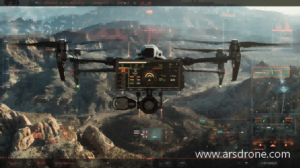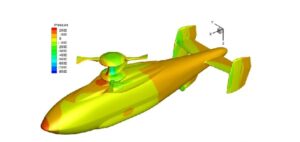
The rapid development of drone technology has changed the way multiple industries operate, from express logistics to agricultural monitoring, and even to film production. Drones are being used in an increasingly wide range of applications. Behind the realization of these complex tasks by drones, flight control systems (flight control systems) play a crucial role.
Introduction to Drone Flight Control System
1.What is a flight control system?
The UAV flight control system is the core part of the UAV brain, responsible for managing and controlling the attitude, heading, speed, and other flight parameters of the UAV. It perceives the status of the UAV by receiving sensor data (such as accelerometers, gyroscopes, GPS, etc.) and executes control operations by adjusting motor speeds, rudder angles, etc.
2.Key functions of the flight control system
2.1 Attitude control: Maintain flight stability.
Attitude control is one of the basic functions of the flight control system. When a drone is flying, it needs to maintain balance at all times, and this function relies on the attitude control of the flight control system. By controlling the pitch angle (forward/backward tilt), roll angle (left/right tilt), and yaw angle (left/right rotation) of the drone, the flight control system can ensure that the drone maintains a stable attitude in different flight environments without being affected by wind or other disturbances.
Attitude control is achieved through feedback from gyroscopes and accelerometers. The flight control system continuously senses the actual attitude of the drone, compares it with the preset ideal state, and adjusts motor speeds in a timely manner to restore balance.
2.2 Heading control: precise path planning
Heading control allows drones to fly along predetermined flight routes or towards specific targets. The flight control system calculates the drone’s flight path by combining GPS positioning data and preset waypoints (or target points), and controls it to face the correct direction.
This function is widely used in automatic cruising and mission execution of drones, such as in logistics delivery, where the flight control system ensures that the drone flies along the planned route and can make precise turns at different stages of the mission.
2.3 Height control: precise flight at the ideal altitude
To ensure the safety of flight and the precision of mission execution, the altitude control function in the flight control system is crucial. Altitude control mainly relies on devices such as barometers, GPS, laser or ultrasonic sensors. Through these sensors, the flight control system can detect the flying altitude of drones and adjust thrust to keep them at the target altitude.
For example, in agricultural field monitoring, drones must maintain a stable height to capture uniform image data and prevent fluctuations in height from affecting monitoring effectiveness.
2.4 Automatic flight: Autonomous mission execution
With the advancement of drone technology, more and more drones are able to perform automatic flight missions. The flight control system plays a core role in the automatic flight process, as it can automatically plan the flight path based on preset mission parameters (such as starting point, target point, flight speed, etc.) and execute tasks without human intervention.
This function enables drones to be used in complex task scenarios such as building surveys and pipeline inspections. The flight control system completes task execution according to preset paths and time schedules.
2.5 Collision avoidance system: Guardian of flight safety
During the flight, the safety of drones is crucial, especially when flying in complex environments. Modern flight control systems often integrate collision avoidance functions. By using sensors such as lasers, ultrasonic waves, cameras, etc., the flight control system can perceive obstacles in the surrounding environment and calculate the distance to them. Once a potential collision risk is detected, the system will automatically adjust the flight path or stop flying to prevent accidents.
For example, drones conducting inspections in urban buildings can safely navigate around obstacles such as tall buildings and power lines through the collision avoidance function of the flight control system to ensure that tasks are completed smoothly.
2.6 GPS positioning: accurate navigation and return home
The GPS function of the flight control system provides precise positioning for drones, ensuring that they can execute tasks in complex environments. In addition to navigation, GPS also plays a key role in the “auto return” function. When the drone’s battery is low or signal is lost, the flight control system can guide the drone to automatically return to its takeoff point to avoid losses.
For example, during outdoor filming missions, the flight control system uses GPS to ensure that the drone flies according to preset locations and automatically returns to the operator after completing the mission.
2.7 Data Transmission: Real-time Monitoring and Information Feedback
The flight control system also has data transmission capabilities, which can transmit the drone’s flight status, sensor data, and real-time images to the ground control station or operator. This function is particularly important for remote control and monitoring of drones. Operators can adjust flight strategies or intervene with the drone based on the real-time data received.
For example, in disaster relief missions, ground personnel can quickly assess the situation at the disaster site through images received via the flight control system, enabling them to respond promptly.
The flight control system of a drone is a core component that enables safe, stable, and autonomous flight of drones. It not only maintains the attitude of drones and controls their flight path and altitude but also incorporates advanced sensor technology to provide functions such as collision avoidance and automatic return-to-home. As drones are increasingly used in various scenarios, the functionality of flight control systems continues to improve, enhancing drones’ intelligence and adaptability.
With further technological advancements, flight control systems will become more intelligent, unlocking greater potential and possibilities for drone applications across various fields.
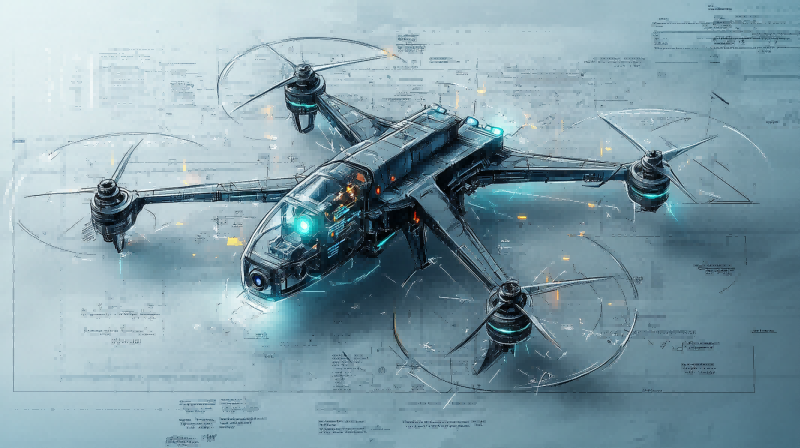
What are the new technologies for attitude stability and control in drone flight control systems?
The latest technologies for attitude stability and control in drone flight control systems include various advanced methods and frameworks. Here are some key technologies:
- Self-coupling PID control: A method based on the self-coupling PID controller (SC-PID) is proposed for attitude loop control of quadcopters. This method optimizes the control law by establishing a nonlinear mathematical model and introducing a velocity factor.
- Active disturbance rejection control combined with fuzzy control: An attitude controller that combines fuzzy control methods with traditional active disturbance rejection control theory to address model uncertainties and external disturbance issues.
- Deep reinforcement learning: GymFC is a flight control tuning framework focused on attitude control, synthesizing neural network flight controllers through deep reinforcement learning, outperforming traditional PID controllers. This framework integrates the power of deep reinforcement learning, digital twins, and the open-source community, with the potential to drive drone control technology to new heights.
- Fractional-order sliding mode control: The fractional-order sliding mode control method combines the stability of fractional-order differential control and the ability of sliding mode control to handle nonlinearity, providing a new perspective and solution for the flight control of quadcopter drones.
- Backstepping sliding mode control: The flight attitude adaptive control system for quadcopter drones designed based on the backstepping sliding mode algorithm can effectively solve the problem of flight behavior divergence or oscillation that may occur after attitude control.
- Dual-loop controller: A dual-loop controller designed using PD (proportional-derivative) and integral sliding mode technology is used to achieve position and attitude tracking control for quadcopter drones.

How to improve the accuracy and reliability of drone navigation positioning systems?
Improving the accuracy and reliability of drone navigation positioning systems can be approached from the following aspects:
- Multi-mode satellite navigation system: By using compatible systems such as Beidou and GPS, the reliability of drone navigation can be significantly improved. By simultaneously utilizing signals from multiple navigation satellites, the number of satellites can be increased from around 10 in a single GPS system to over 20, greatly enhancing positioning accuracy and reliability.
- Sensor data processing technology: Processing, filtering, and verifying various sensor data generated by drone systems to improve their accuracy and reliability. Sensor processing technologies mainly include techniques such as data sampling, data filtering, and data verification.
- Assistance of inertial navigation system (INS): For GPS systems, the assistance of an INS can enhance its ability to track satellites, improve receiver dynamic characteristics, and resistance to interference. Integrated INS/GPS can also achieve integrity monitoring for GPS to enhance reliability.
- Kalman filtering method: When outdoor positioning, combining the Kalman filtering method with other sensor information is a good solution to effectively deal with issues such as GPS signal loss or degradation.
- Image recognition and GPS dual positioning: Using the method of dual positioning with GPS and image recognition, utilizing PID flight attitude control of drones, combined with open-source computer vision libraries (such as OpenCV) for image processing, solves the problem of precise detection of drone targets. This method can enhance system functionality and quickly complete information transmission and processing.
- Ground-based augmentation system: By deploying ground-based augmentation stations nationwide, the accuracy of Beidou navigation can be improved from meter-level to a higher level, thereby enhancing the precision and reliability of drone positioning.
- High-precision image matching algorithm: Using an improved and optimized high-precision image matching algorithm (such as the FLoFTR algorithm) to achieve real-time high-precision positioning on a drone computing platform. This method can solve the problems of poor accuracy and easy loss of positioning in traditional visual positioning methods.
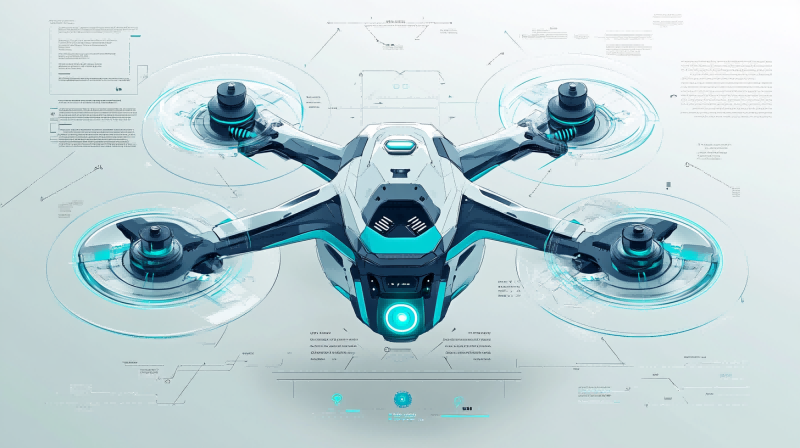
What are the advanced features in the automatic flight mode of drones?
Advanced features in the automatic flight mode of drones include various intelligent shooting and navigation functions, which are achieved through advanced sensors, visual recognition technology, and control systems. Here are some key advanced features and their working principles:
- Follow mode: DJI drones are equipped with advanced visual recognition technology and GPS positioning system, which can automatically track the target through follow mode. Users only need to select the target, and the drone will automatically follow the target for stable and smooth image or video capture.
- Focus tracking, spotlight, POI (Point of Interest), and active tracking: These intelligent flight modes allow drones to automatically adjust shooting focus and lighting in specific scenarios to ensure optimal shooting effects. For example, focus tracking can lock onto and continuously track a specific target, while POI can automatically hover when reaching a point of interest.
- Voice control: Users can enable voice wake-up and use voice commands to control the drone, greatly simplifying the operation process and improving flight efficiency.
- Automatic hover and preset waypoint flight: In GPS mode, the drone has the ability to automatically hover, staying precisely in a certain position in the air without being affected by wind speed and direction. In addition, the drone can also achieve functions such as preset waypoint flight and returning to the starting point.
- Attitude mode: This mode utilizes GPS modules, forward vision system, and downward vision system to perform precise hovering of aerial photography drones, directional flying, advanced modes, etc. When there is strong wind, the aircraft will make corrective movements to maintain stability.
- Automatic return home, automatic power supplementation, intelligent data collection and analysis: These functions support drones in achieving autonomous inspections, automatic return home operations with power supplementation as well as intelligent data collection and analysis. Compared to manual flight control operations, automatic flight systems reduce operational difficulty and improve work efficiency.
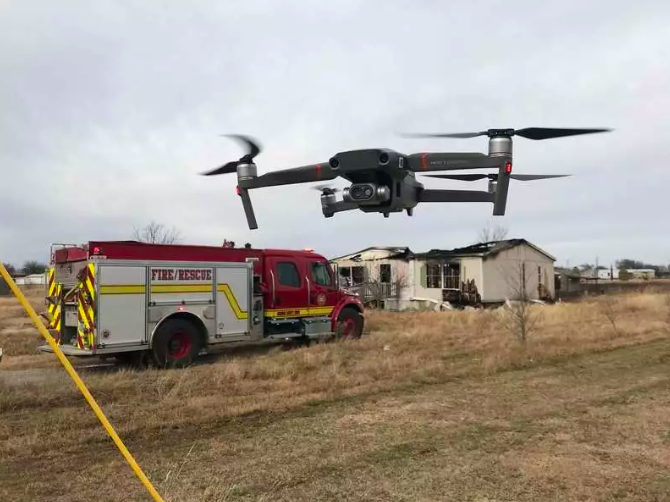
What fault protection mechanisms are there in the drone flight control system?
In the unmanned aerial vehicle flight control system, the fault protection mechanism specifically includes the following measures:
- Adaptive Fault Diagnosis and Fault-Tolerant Control: With the expansion of modern control system scale and the increasing complexity of operating environments, the probability of component failures such as actuators, sensors, etc., has significantly increased. In order to promptly eliminate these faults, unmanned aerial vehicle flight control systems adopt adaptive fault diagnosis and fault-tolerant control technology.
- Communication Failure Handling: Real-time communication between aircraft and ground terminals (such as remote controllers or ground stations) is essential. If communication failure occurs, the consequences can be severe. Therefore, flight control software needs to consider communication faults and take appropriate measures to ensure reliable communication.
- Power Management: In unmanned aerial vehicle flight control systems, power management is an important fault protection measure. Through effective power management, it can ensure that the drone can continue to operate or safely land when encountering power-related faults.
- System Redundancy Configuration: By implementing distributed or integrated system redundancy configuration, when a component fails, other standby components can take over its function to ensure the overall security of the system.
- System Monitoring and Detection Methods: The unmanned aerial vehicle flight control system is equipped with various monitoring and detection methods to monitor the system status in real-time and promptly identify potential faults.
- Security Verification Methods: Through modeling and security verification of the unmanned aerial vehicle flight control system, it ensures that the system meets sufficient safety performance requirements at the design stage.
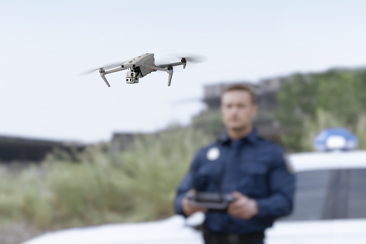
Challenges and Solutions in the Process of Unmanned Aerial Vehicle Information Collection and Transmission
The main challenges and solutions faced by drones in the process of information collection and transmission can be analyzed in detail from the following aspects:
1.Main challenges
Drones typically have limited energy capacity, which requires frequent recharging or battery replacement during long flights. In addition, the widespread deployment of IoT devices also brings about management complexity.
During data transmission, it is vulnerable to hacker attacks, including passive attacks (data theft) and active attacks (manipulating drone flight, directly transmitting data, etc.).
In the informationized battlefield, satellite signals and communication links of drone systems may be subject to unintended interference, affecting the stability of flight and data transmission.
Information in IoT needs to be kept fresh to ensure real-time and accurate data. However, minimizing the Age of Information (AoI) in a scenario where multiple drones work together is a key issue.
Integrating sensing and communication functions can enhance the flexibility and efficiency of drones but also increase system complexity and demand for new technologies.
2.Solution
By improving the design of drones and using efficient energy management systems, their flight time can be extended. For example, utilizing solar panels or high-efficiency battery technology to supplement energy.
Using encryption technology and secure protocols to protect the security of data transmission process. In addition, enhancing anti-interference capability can be achieved through redundant communication paths and multi-path transmission.
Utilizing GNSS/INS/VNS integrated positioning information fusion technology can improve the navigation accuracy and anti-interference capability of drones in complex environments.
Through the collaboration of multiple drones, more efficient data collection can be achieved, and the efficiency of the data collection process can be improved by optimizing kinematics, energy, trajectory, and collision avoidance constraints.
Integrating sensing and communication functions into a single payload can reduce the weight of drones and enhance their flexibility. This integration can also enable mutual benefits between sensing and communication functions, leading to new information theories.
Combining the application needs of various industries, drones are not just tools but information collection terminals. Fully utilize the good integration of drones, flight control software, and industry platforms in the workflow to provide fast and practical solutions for information collection, extraction, and utilization.


